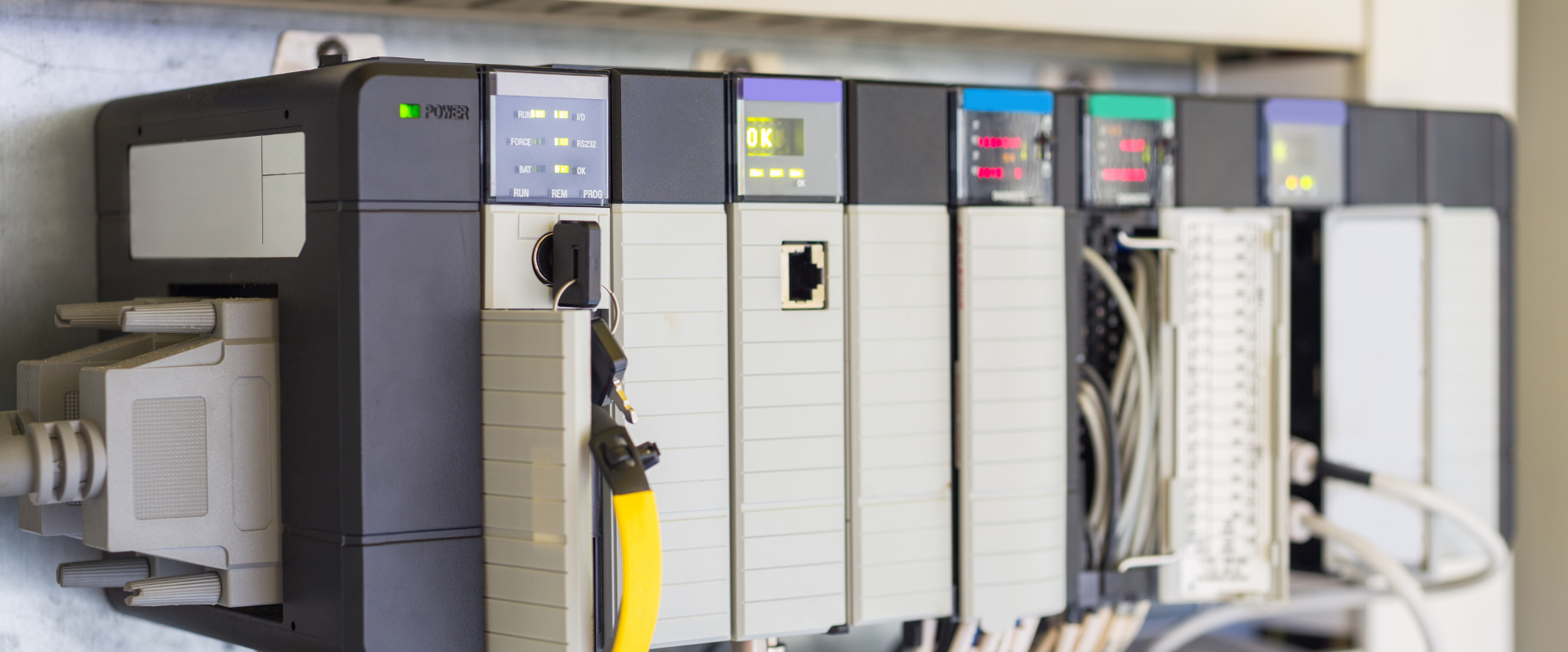What are the 3 types of PLC?
What are the 3 types of PLC?
Any technology must have the ability to be adapted to different situations, such as scaling it up or down and customizing it for varied applications. This can include different types of signals currents, such as large-scale, small-scale, medium-scale, analog, digital, direct current alternating current and connecting to HMI SCADA
Modern Programmable Logic Controllers have been adapted to accommodate different types that are best suited for a specific application. This offers cost-efficient solutions while fulfilling the needs of each consumer.
Different PLC models are typically classified based on various parameters. It is important to note though that various manufacturers may combine a few of these characteristics, resulting in hybrid PLCs.

The two major types of PLC
PLCs come in a variety of classifications, but the two most frequently discussed types are the simplest. This is because they are easily found in online sources and are easier to understand compared to more complex PLCs.
- Fixed (Integrated or Compact) PLC
- Modular PLC
1. Fixed/Integrated/Compact PLC
- The most prevalent type of PLC is called the Fixed I/O PLC.
- The acronym 'Fixed I/O' stands for 'Fixed Input/Output'. It is a feature of many Mini PLCs, where the input and output components are pre-wired and integrated into the device. By having predetermined inputs outputs, you'll know exactly what your PLC is capable of doing as it is determined by the manufacturer.
- This type of PLC cannot be extended by increasing the number of inputs or outputs.
2. Modular PLC
- A Modular Programmable Logic Controller (PLC) consists of multiple modules that can be added to or removed from the system. This makes the PLC system scalable, allowing it to cover more automation requirements.
- Modules offer extra capabilities to a Programmable Logic Controller (PLC), like an increased number of I/O units. Furthermore, they are much more convenient to use since every element is separated from all the others.
- To create a PLC control system, it is necessary to manually connect the power supply, communications module Input/Output module to the microcontroller. All of these components are independent of each other.
- Rack-mounted PLCs are a type of modular programs. The communication module is contained in the same rack, which ensures all connections are centralized and easily accessible. This setup makes working with the PLC simpler and more efficient.
What are the Pros of using a Modular PLC?
Modular PLCs are considered to be the most advantageous type of programmable logic controllers, particularly for large-scale industrial systems with a high number of input and output devices. Some of their advantages over fixed PLCs include:
- Scalability
- Modular PLCs are advantageous because they offer good scalability. This not only makes it easy to expand the control system as needed but can also be beneficial for the business that is using the controller.
- Modular PLCs are helpful for centralized process control as the modules are connected to a single programmable logic controller. This makes it easier to manage multiple processes from one location.
- Using a Modular PLC, the company can easily expand their assembly lines by connecting additional output devices for similar tasks and still use the same controller. This provides extra flexibility and scalability in production.
- The Fixed I/O PLC does not allow for much expansion in capacity as it is limited to a single device for control input scans in the system. However, with other types of PLCs, you can add additional capacity to your control system as needed.
- The Fixed I/O PLC proves to be economically beneficial when you only need a few devices to manage the control system. This also ensures that you won't have to add more devices in the future if your system gets bigger.
- The Number and type of I/O
- A Modular Programmable Logic Controller (PLC) has the advantage of scalability, meaning its number of input devices it can scan and output controls it features is much greater than a Fixed Input/Output PLC.
- Modular PLCs are capable of supporting a much greater range of I/O than Fixed PLCs, even with the addition of only one module. This makes them a great choice if your application requires a large number of possible inputs and outputs.
- Simple Fault Detection
- Modular PLCs are incredibly useful when it comes to diagnosing faults. This is because each module is designed to do a specific job the fault can be easily isolated, unlike with fixed I/O systems.
- To use a PLC effectively, one must be familiar with the built-in proprietary circuitry it features. Without this expertise, an individual may not be able to utilize the device to its fullest potential.
- Troubleshooting with Modular PLCs is easy because if the outputs inputs are not working, you can narrow down your search to the I/O module being the culprit. This makes it simpler and faster to identify fix the issue.
- Troubleshooting a Modular PLC is much easier as compared to its traditional counterpart as individual modules can be isolated from the entire set-up for testing repair purposes. This allows for a faster more efficient diagnostic process compared to that of a regular PLC system.
- lower Downtime
- It is evident from the previous point that the Modular PLC is relatively simpler to repair as compared to other systems. This is primarily because each module in it has an individual system.
- Use of PLCs (Programmable Logic Controllers) on the assembly lines can create more operational efficiency than Fixed I/O. This is because a PLC-controlled system will take less time for troubleshooting, enabling the assembly line to have lesser downtime.
- Another great benefit of this system is that modules can be purchased individually, meaning you can quickly obtain a spare to replace the broken one right away. This provides a great deal of convenience and peace of mind.
- Industrial control systems are designed to work optimally in a wide range of environments, reducing the risk of failure. Nevertheless, it is highly recommended to have a backup for unexpected scenarios.
- The Fixed PLC would take more time to troubleshoot bring back into working order compared to other PLC systems, resulting in a longer downtime.
- Not only that, if you need to get the PLC serviced by the manufacturer, it might take a while and in order to get your system working again, you'd have to replace it completely.
- Fixed PLCs can be backed up with a secondary PLC instead of just a module, offering increased reliability and redundancy.
- Mix Modules
- Modular PLCs provide increased flexibility with their modules that can be used in various combinations to get the desired results. This enhanced capability makes them a great choice for solving complex system goals.
- The Modular PLC provides extensive configuration choices and can be used to create a complex system of devices that are capable of carrying out tasks which would not be possible with traditional PLCs. By leveraging its features, you can dream up operations that would normally require more complicated methods.
- Memory
- Modular Programmable Logic Controllers (PLCs) are just like our Desktop Computers in terms of being capable of expanding their memory. This allows them to have a higher storage capacity.
An analogy for the Fixed I/O and Modular I/O
- A laptop computer can be thought of as an example of a Fixed I/O PLC while a desktop computer is similar to a Modular I/O PLC.
- Laptops usually come with a certain amount of Random Access Memory (RAM) and storage capacity (Hard Disk Memory). It can be quite expensive to upgrade them and their prices are usually higher than other electronic devices.
- It is important to pay attention to the compatibility of the Hard Disk and RAM when expanding your laptop's memory capacity. Incorrect compatibility could lead to serious technical issues.
- Upgrading a desktop computer is easy and can be done quickly. All you need to do is plug in new parts into available slots and replace old ones. This allows the user to customize their computer according to their needs.
- Replacing RAM or Hard Disk of a computer is easy. Just remove the existing one from its connections and replace it with the new one you purchased. The process requires no technical expertise and can be done in minutes.
- Laptops are more popular than desktops because they are portable and can be taken anywhere. However, the processing power of these laptops usually isn't as strong as desktops for the same price range.
- Initially, the Fixed PLC is usually more advantageous compared to a Modular PLC. However, in the long run, the Modular PLC can provide a more cost-effective solution for applications which require higher performance demands.
PLC according to Output types
Initially, the Programmable Logic Controllers used for switching functions were of Relay-type. This involved having an electromechanical switch controlled by the PLC to drive output devices.
With advancements in technology, developers have found better ways to control the outputs by using transistors and triacs. These switching components are known to be more reliable and provide better performance than earlier methods.
It is essential to think about the type of load before you decide on the kind of output a PLC should produce. This way, you can ensure that your PLC is capable of managing whatever task it has been assigned.
- Relay Output Type
- Relays can be used for both AC and DC output applications, making them versatile and highly useful.
- A PLC (Programmable Logic Controller) is used to switch the contactor of a relay by running an electrical current through its coils. This produces an output that is similar to a relay.
- When electricity passes through a coil, it creates a magnetic field in the center of the coil which can attract the metallic contacts of a relay. This is useful information if you are not familiar with this process.
- Despite being a reliable mechanism, mechanical wear and tear is an issue faced with relays due to its frequent switching operations.
- It is important to note that in circumstances where there is only occasional activation of a device (e.g. a motor), the best type of output would be one provided by Relay technology. This will ensure a steady performance and reliability to keep the device running continuously and effectively.
- Transistor Output Type
- Transistors are essential components of microprocessors as they act as switches for performing various operations. They are made of semiconductor material and come in tiny sizes suitable for use in micro- or nano- scale electronic circuits.
- Transistors are devices that have no physical parts and hence switching is faster. This makes them an ideal solution for high-speed applications.
- A type of device which does not include any moving parts is referred to as a Solid-state device. Such devices can often be found in storage devices such as Solid-state drives (SSDs).
- Solid state drives offer much faster transfer speeds than traditional hard drives, and the same is true for PLC outputs. These solid-state outputs from a PLC usually provide higher speeds than you would expect.
- DC signal transistors are specifically designed to handle only direct current outputs due to their composition; they allow electricity to flow in a single direction after being activated.
- PLCs can be widely used with this output type, as it employs optoisolation to effectively separate the transistor from its electrical source. This prevents damages and malfunctions that could otherwise be caused due to the interactions between them.
- Triac Output Type
- The triac is a semiconductor which works similarly to two transistors working in harmony, known as 'mirrored transistors', typically the bipolar junction transistor.
- PLC outputs can now be used in controlling Alternating Current (AC) devices, as the current can flow in both directions. This allows for a higher level of flexibility compared to previous methods.
- Analog Output Type
- PLC outputs are mainly used for switching purposes and are therefore digital in nature. They have the capability to turn ON OFF, depending on the specified criteria.
- In contrast to digital output PLCs, analog output PLCs are better equipped to handle certain tasks such as controlling the speed of continuously running devices like motors or turbines. The voltage/current range may depend on the device manufacturer and type of module used.
PLC types according to Size
For automated systems, it is not always cost-effective to opt for large PLCs which can support a large number of devices both in modular and fixed type. Even though these are designed to handle higher capacity, they may not be the most efficient device to rely on as the controller.
PLC manufacturers are developing more compact devices that are suitable for a variety of applications with limited space. These miniaturized versions provide the same functions as their larger counterparts, yet require less area. When selecting Fixed type of PLC, cost is often a primary factor as it is more suitable for smaller applications with no plans for expansion. Such systems are usually less expensive to install and maintain.
- Mini PLC Type
- Mini PLCs usually have between 128 and 512 I/O points which is enough for many smaller control systems. If the system is expected to grow beyond that, then larger PLCs should be considered. Such PLCs offer more than 512 I/O points and are ideal for applications with bigger scalability requirements.
- Micro PLC Type
- Micro PLCs are an ideal choice for small-scale automation and control systems like amusement rides, as they usually have 15 to 128 I/O points. This makes them the perfect tool for such tasks.
- This is due to the fact that amusement rides need to have their controls situated close by. This eliminates the need for a "Central PLC" for every ride in the amusement park, saving time effort.
- Furthermore, amusement rides usually require only a few safety-related devices which means that they do not need a large number of I/O points. Therefore, a small Micro PLC can be used in such cases.
- Pico/Nano PLC Type
- Pico PLCs are suitable for basic automation applications and have 15 or fewer I/O points. They are perfect for teaching since they require minimal setup, come with a display panel, as well as being inviting to those who want to learn about the fundamentals of Programmable Logic Controllers.
- Pico/Nano PLC devices stand out for their simplicity convenience, as they are very small in size and can easily fit into the palm of your hand.
Safety PLCs
The IEC 61508-approved Safety PLC is specifically designed for the utmost protection of Electrical/Electronic/Programmable Electronic Safety-related Systems. It adheres to the highest standards of safety and security.
This type of PLC functions almost identically to a regular logic controller but with a significantly lower chance of failure.
PLCs equipped with safety components are designed with additional redundancies to prevent malfunctioning, safeguarding against hazardous consequences as a result of system failure.
It is important to remember that when using safety PLCs, experienced knowledgeable personnel should be assigned to inspect them regularly. This ensures that the system is running smoothly and all safety protocols are properly observed.
Compared to regular PLCs, this type of technology comes with a higher price tag due to the additional safety circuitry included.
In the long run, safety PLCs are a more practical option than regular PLCs since they eliminate any potential issues that may arise. This makes them a smarter choice for businesses in the long term.
Conclusion
PLCs come in a variety of types and it's important to understand the differences between them before integrating them into your control system. It's essential to know the right one for your input/output device and overall design.\\ It's important to know that connecting an AC output to a transistor-based PLC can cause problems. If you've been paying attention, this article should have given you a good idea of the various types of cost-efficient PLCs and how they are best used in specific applications.



